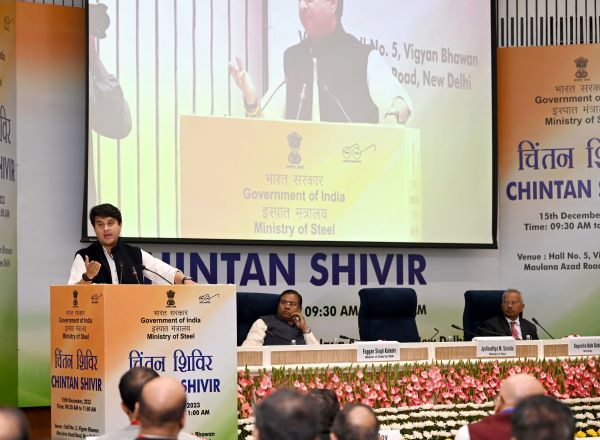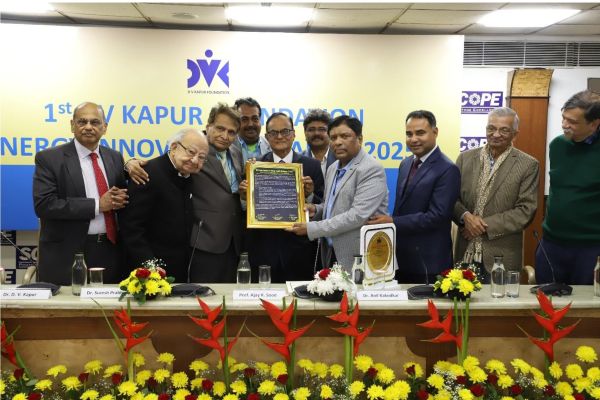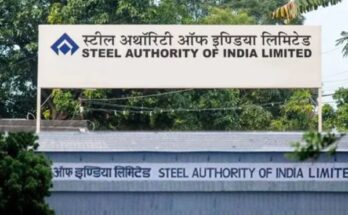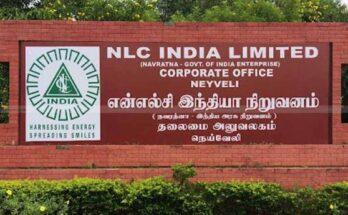
Team News Riveting
New Delhi, December 16
The Union Minister of Steel and Civil Aviation, Jyotiraditya M. Scindia, urged the stakeholders in the steel sector to enhance the application of Artificial Intelligence (AI) in their respective Steel Plants.
While addressing the Chintan Shivir today, organised by the Ministry of Steel, the Minister reiterated that the purpose of Chintan Shivir is to understand our responsibility towards evolving economic order & deepen our intellectual and knowledge base which can be applied across the developmental spectrum of the country. Besides the periodic Chintan Shivir, the ministry must also endeavor to create a continuous learning ministry, thereby improving the comprehension of the wider environment for improved contribution towards our developmental goals
The Minister said that the whole concept of steel making will undergo transformation and the practices will need to be continuously updated. As the world looks at Data Driven Decision making, the Indian Steel industry needs to be at the forefront in implementing artificial intelligence technology and their applications. He emphasized that “we in the steel sector need to understand that it is our fiduciary responsibility to safeguard mother earth by embracing the concept of green steel and latest technologies.” He encouraged the Indian steel fraternity to embrace the Prime Minister’s mantra of Reform, Perform & Transform while traversing the long road of green transformation.
Minister of State for Steel and Rural Development, Faggan Singh Kulaste, expressed gratitude to the panelists/experts who spoke during the sessions and said that discussions and exchange of ideas on Carbon Border Adjustment Mechanism (CBAM) and Artificial Intelligence have improved our understanding of the subjects, thereby helping us in improving our understanding on various issues impacting the steel sector. He also emphasised that the usage of AI & automation can strengthen and improve the value chain, quality assurance and energy management in the steel sector.
Secretary, Ministry of Steel, Nagendra Nath Sinha stressed that the knowledge landscape is changing fast and we need to make every worker a knowledge worker who not only understands the work but also the context while working for the organisation and nation. He further added that as the concept of CBAM is fast evolving and emerging, it is important to understand its impact across the value chain of operations for the sector which will be severely impacted. The steel sector needs to capitalise on the present challenge of the CBAM to ensure rejuvenation of the demand so that the Indian export economy is further strengthened. He further said that AI concepts need to be applied in exploring, identifying, and developing new mines by applying the vast available data with Geological Survey of India besides steel plant companies. He also said that the idea of using Digital Twins for disaster management systems is also worth exploring
During the panel discussions, experts explained that as part of its Green Deal 2050, the European Union has proposed the implementation of a Carbon Border Adjustment Mechanism (CBAM) for certain products (including steel and aluminium). CBAM would apply carbon emission costs on imported products equivalent to those borne under the EU system. CBAM would not only affect exports to the European Union but would also lead to realignment of value chains. During the Chintan Shivir, such long term impact of CBAM and India’s likely response to CBAM were discussed. The potential solutions for small-medium sized enterprises (SMEs) which buy steel from traders and do not have access to emission declaration of the Integrated Steel Plants were also explored.
AI experts from Tata Steel, IIT Kanpur, AMNS and SAIL stated that there are various examples of simple yet extremely effective solutions that are deployed in the steel sector for improving the productivity, optimising energy consumption, safety, its applications for simulation of operations, condition based monitoring through sensors and robotics, Predictive maintenance etc.



